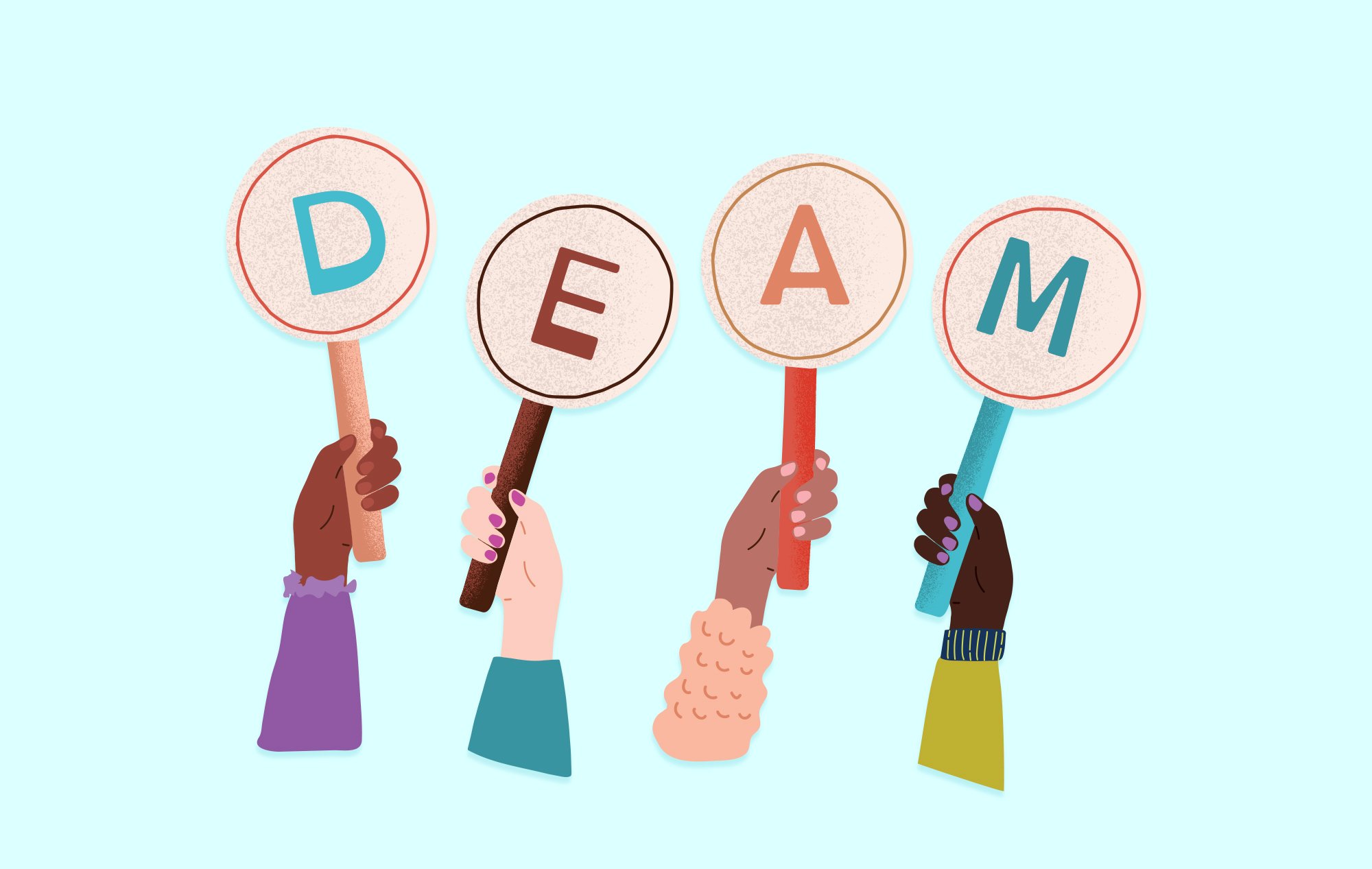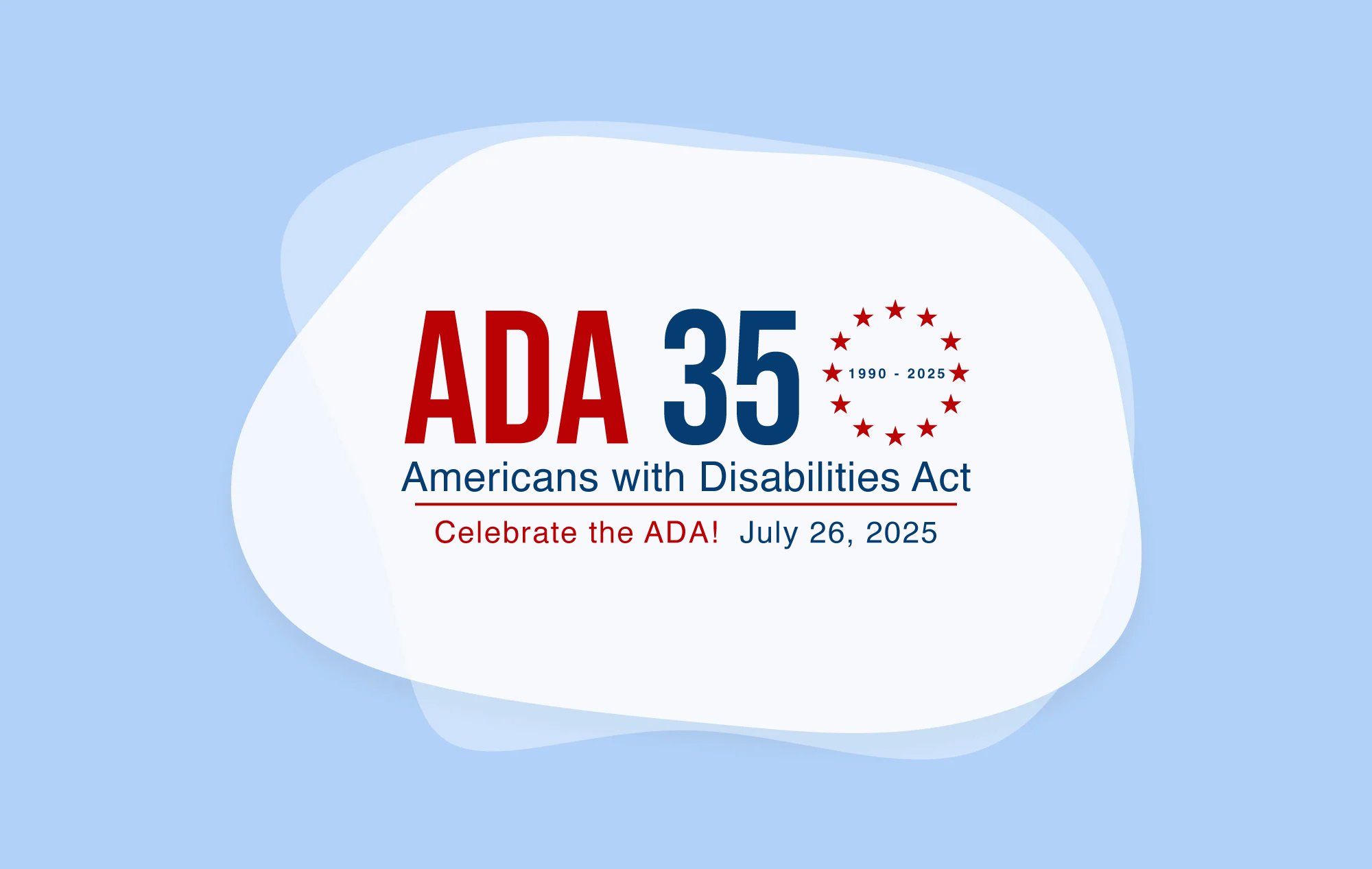In recognizing National Disability Employment Awareness Month (NDEAM) each October, InclusionHub hopes to raise awareness about the most pressing and prominent developments surrounding this commemorative campaign, specifically why it makes sense for organizations of all industries and sizes to include more disabled and marginalized employees within their workforces.
Throughout this month at InclusionHub, we’ll refer to this campaign as Disability Employment Awareness Month (DEAM) to further recognize the need for inclusive global coverage and awareness.
Created by Congress after World War II, the campaign was initially a week-long event dubbed “National Employ the Physically Handicapped Week.” In 1962, “physically” was dropped to be inclusive of workers living with all disabilities, both visible and invisible. In 1988 Congress expanded the campaign to include the entire month.
With this year’s theme: “Disability: Part of the Equity Equation,” it’s also fitting one of the first items outlined by the Biden-Harris Administration included Executive Order 13985 on Advancing Racial Equity and Support for Underserved Communities.
Designed to highlight systemic barriers marginalized groups experience when gaining access to various government-based programs and services, the U.S. Department of Labor (DOL) published its Equity Action Plan in April 2022.
“The Biden-Harris administration’s coordinated effort to ensure marginalized, underserved and excluded communities have access to the benefits and services offered by federal programs has never been more important,” U.S. Secretary of Labor Marty Walsh said in a statement accompanying the release of the plan. “By making equity for historically underserved communities a priority, the Department of Labor will provide workers with greater opportunities to share the benefits as our nation’s economy continues its historic rebound.”
In recognition of DEAM, we’ve provided a summary of the current gaps within labor equity, and how the DOL’s Equity Action plan aims to foster an environment whereby those with disabilities and other marginalized communities can gain access to the same resources, policies, and programs as non-disabled workers.
Marginalized & Disabled Job Seekers Continue to Struggle
According to the U.S. Bureau of Labor Statistics (BLS) Metropolitan Area Employment and Unemployment Summary, jobless rates remain low in 384 of 389 U.S. metropolitan areas, year over year. Average salaries also remained flat, or increased in 2021 in only about a quarter of these locales.
However, for marginalized populations—such as the disability community—these statistics don’t apply. Per the aforementioned labor market data, these groups indicate challenges and obstacles regarding employment and job search resources. This also factors more job seekers reporting a disability than prior years due to coronavirus pandemic-related physical and mental health limitations.
For various reasons and obstacles, one in four American adults living with a disability will encounter challenges and other obstacles in obtaining both a job and financial freedom.
The most prominent indicators of this continued struggle are noted in the 2021 BLS Labor Force Characteristics Report, which found that just 19.1 percent of disabled persons were employed when compared with 63.7 percent of non-disabled workers. Even with both groups experiencing unemployment declines, there are still twice as many unemployed disabled job seekers when compared with non-disabled individuals.
So could removing these obstacles strengthen the labor market, and provide employment equity for the disability community?
According to The Center for American Progress, a public policy research and advocacy organization, if the disability community employment rate was level with non-disabled employees, almost 14 million more jobs could have been added.
The aforementioned BLS report reveals a similar trend for persons of color with disabilities. The unemployment rate of those identifying as white and disabled in 2021 was 9.3 percent when compared with 15.1 percent of Black people with a disability, and 13.3 percent of disabled Hispanic or Latino job seekers.
DOL Equity Action Plan Implementation & Improvements
Within each area of the DOL Equity Action Plan, it summarizes current obstacles and solutions on how to overcome these inequities over the next several years.
According to the DOL website, this plan boasts five specific workforce equity-based initiatives:
- Equal Wage & Hour Regulations
- Enhancement & Execution of Current Unemployment Insurance Operations
- Easily Accessible Programs, Services & Resources for Limited English Speakers
- Additional Employment Training
- More Opportunities for Federally Based Apprenticeships
The plan aims to increase greater opportunities and access regarding employment, benefits, and resources for disabled and other marginalized individuals.
Equity Action Plan for Protection of Workers' Wage and Hour Rights
Designed to ensure fair compensation for lower paid employees, the DOL’s Wage and Hour Division (WHD) cannot be successful without acknowledging unfair wage equity among the disabled community. The coronavirus pandemic further amplified these inequities as many of these workers were considered essential. Lack of structure and fear of retaliation were also other challenges experienced by these groups, especially if they filed a complaint or grievance.
Standing up for workers also means ensuring protection for these groups from both various government and community-based organizations. This includes relief from fears of retaliation, and related tools and training needed to effectively perform their jobs.
The DOL will also put a system in place to observe and track these activities as part of WHD accountability, and to continually ensure engagement with state and local governments, and other employment organizations.
This area will also reiterate the importance of retaliation prevention and workplace crimes. WHD staff members will undergo training and education to effectively identify, amend, and address workplace retaliation, especially within immigrant communities, and other vulnerable populations.
Equity Action Plan for Unemployment Insurance
The DOL equity plan states federal-state Unemployment Insurance (UI) aided more than 53 million out-of-work Americans, while supplementing $800 billion into the economy during the height of the coronavirus pandemic.
While this brought relief for many furloughed or unemployed workers, the disability community had a different perspective. The equity plan will address why—both pre- and post-pandemic—these marginalized communities have less access to UI benefits.
According to a 2018 Census survey, 21 percent unemployed Black workers were less likely to obtain benefits compared to their white counterparts. It also found that people with lower levels of education, those with disabilities, and workers with limited English language proficiency were also disproportionately less likely to receive benefits.
The DOL is actively working to improve UI equity gaps for these historically underserved communities through tracking progress, accountability, statewide equity grants, equity data partnerships and more.
Equity Action Plan for Improving Language Access
According to 2019 data collected via the American Community Survey, limited English proficiency (LEP) or English as a second language (ESL) workers represent more than 8.5 percent of the labor force. These individuals are more likely to experience harmful work situations, such as wage theft, fear or retaliation, and other labor violations. These barriers are also more common for LEP and ESL workers due to limited information on specific DOL programs, services, and other employment opportunities.
The DOL equity plan outlines several initiatives such as further outreach within bilingual communities, additional departmental resources, grants, and other resources for LEP and ESL communities.
Equity Action Plan for Workforce Training
As we mentioned previously, BLS statistics reported people of color experiencing higher levels of unemployment than white job seekers. A common theme prior to the pandemic, this remains consistent. As of November 2021, “Black workers are 65% more likely to be unemployed than their white counterparts.”
Therefore, the plan hopes to amplify focus on marginalized populations experiencing joblessness and financial insecurities. This includes development and additional workforce training, as well as understanding challenges endured by these groups.
Equity Action Plan for Government Apprenticeships
Diversity, Equity, and Inclusion (DEI) must also be fostered within the federal government to effectively serve marginalized communities.
Through Government Apprenticeships, this can open a previously untapped arena for skilled job applicants seeking public sector careers. This includes revised recruitment and hiring processes to include historically Black colleges and universities, and other academically diverse institutions of higher learning.
Moving additional recruitment processes outside major metropolitan areas is also recommended, giving potential employees access to training and other job recruitment programs. The availability of job coaches and other services is key to helping with challenges or obstacles that might arise during these apprenticeships programs.
What Does the Future Hold for Labor Equity?
With the Department of Labor already making strides on its Labor Equity Plan initiatives for underserved and marginalized employees, there are already several policies and ongoing actions to support and help these communities.
A summary of the plan’s early accomplishments include:
- Advancing Equity in Grantmaking
- Analyzing & Improving Equity Data
- Inclusion of Marginalized & Underserved Communities
- Building & Cultivating Community-Based Partnerships
- Creating Agency Priority Goals (APGs) Focusing on DEI
Why Hiring Employees With Disabilities Is Good Business Sense
Hiring disabled workers would not only create a stronger, empowered workforce, but it makes good business sense for organizations, clients, and customers. According to a 2018 study by Accenture in partnership with the American Association of People with Disabilities and Disability:IN, organizations actively employing disabled workers consistently are higher performers than that of non-disabled peers. This includes—but is not limited to—28 percent higher revenue, doubled income, and 30 percent profit margin increases.
Further a U.S. Department of Labor survey says 90 percent of consumers gravitate toward inclusive companies hiring disabled employees.
“Company pride and morale: Those 1 billion people with disabilities? Their family, friends and loved ones work for your company already,” Sarah Mark, Sr. Program Manager of Workforce Development for People with Disabilities, Salesforce, previously told InclusionHub. “When you create a workplace inclusive of people with disabilities, everyone, not just people with disabilities, look more favorably upon the company.”
This article is part of a series focusing on the contributions people with disabilities make to the labor force and in commemoration of Disability Employment Awareness Month, an annual initiative.






Leave a Comment